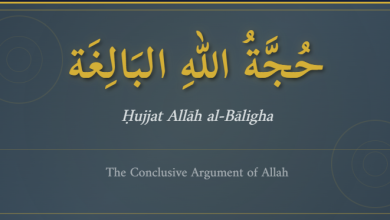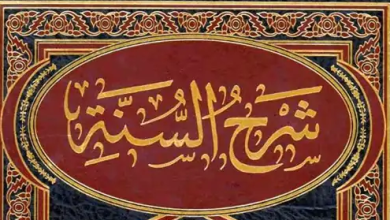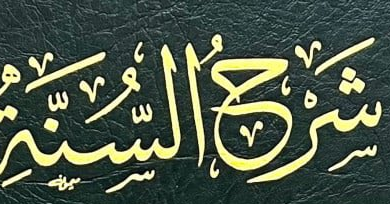Proving The Authenticity of 20 Rak’ats Taraweeh
Description:
Praise be to Allah that is due from all grateful believers, a fullness of praise for all his favours: a praise that is abundantly sincere and blessed. May the blessings of Allah be upon our beloved Master Muhammad, the chosen one, the Apostle of mercy and the seal of all Prophets (may the peace and blessings of Allah be upon them all); and upon his descendants who are upright and pure: a blessing lasting to the Day of Judgment, like the blessing bestowed upon the Prophet Ibrahim (upon him be peace) and his descendants. May Allah be pleased with all of the Prophetic Companions (Ashab al-Kiram). Indeed, Allah is most worthy of praise and supreme glorification!
The following treatise is a response to the compilers of an e-book published on the internet in the year 1424 AH by Abu Khuzaimah Ansaari (alias – Imran Masum) and his colleague, Abu Hibban (alias – Kamran Malik), from Birmingham, England.
The anti-Madhhabi movement generally epithetises itself under the title “Salafi” – being an ascription to the pious predecessors from the first three upright generations of Islamic history. Their claim to be “Salafi” is far from the truth in many ways and issues, and the outstanding scholars from the four Sunni Madhhabs (schools of jurisprudence) – the Hanafi, Maliki, Shafi’i and Hanbali schools have written and exposed the falsehood of those who attack the following of the recognised Madhhabs for over a century and a half now. To exemplify the beliefs, methodology and practices of the pseudo-Salafi movement would lead us to digress away from the main topic of this monograph, but the keen reader can search the Internet for books and articles in Arabic, English and other languages for this issue.
These two compilers produced their “magnum opus” in refutation of the major proofs used by the majority of the senior ranking scholars of the four established and reliable Sunni Madhhabs of Islamic jurisprudence, who advocated the practice of 20 rak’ats of Taraweeh in congregation in the sublime month of Ramadan. In doing so, these two compilers made the following baseless brag in the opening page of their tract:
In this booklet we have established, the evidences utilized for 20 raka’hs are weak and there is not a SINGLE Saheeh hadeeth or athar that mentions the Messenger of Allaah (Sallalahu Alayhee Was-Sallam) prayed or commanded 20 raka’hs Taraaweeh. This booklet also contains the evidences for praying 8 raka’hs and establishes this to be the Sunnah of the Messenger of Allaah (Sallalahu Alayhee Was-Sallam), the Practice of the Companions and those upon their way, All in light of the statements and understanding of the Scholars of Ahlus-Sunnah Wal- Jama’ah From amongst the Imaams of the Salaf, the Scholars of hadeeth of the past and present and the Jurists Up Until 1424H
The last portion of this claim is from one of the most ludicrous suggestions made by those who claim to be on the path of the Salaf in this age, and indeed, these two compilers have committed great injustice to claim that the bulk of the Salaf without exception advocated 8 rak’ats of Taraweeh, not to forget the major scholars of Hadith right down to the year 1424AH when they released their tract.
What is absolutely apparent, is that their claims in rejection of the evidences for 20 rak’ats Taraweeh is in reality a culmination of the findings advocated from the pens of the following authors as admitted by the two compilers from the front cover of their e-book:
Muhammad Abdur-Rahmaan Mubaarakpooree
Shams ul-Haqq A’adheemabaadee
Muhammad bin Ismaa’eel al-Ameer as-Sana’anee
Nazeer Ahmad Rehmaanee al-A’adhamee
Abdul-Jabbaar Khandayaalwee
Ubaidullaah Rehmaanee Mubaarakpooree
Badee ud deen Shah Raashidee as-Sindhee
Muhammad Naasir ud deen al-Albaanee
Muhammad Ismaa’eel as-Salafee
Safee ur-Rehmaan Mubaarakpooree
Muhammad Ra’ees Nadwee
Abu Taahir Zubair Alee Za’ee
Abdul-Ghafoor al-Atharee
They also quoted their late Shaykh of Hadith in Pakistan as follows when saying
Our Claim
The Imaam the Muhaddith, al-Allaamah Abu Muhammad Badee ud deen Sindhee said, “The Ahlul-Hadeeth claim it is not authentically established from any companion that they prayed 20 raka’hs of taraaweeh and the narrations that are mentioned in this regard are all principally weak.” (Tanqeed as-Sadeed Bir-Risaalah Ijtihaad Wat-Taqleed (pg.264).
These two individuals who have styled themselves as The People of Hadith (Ahlul-Hadith) are mere copy and pasters of the findings of their anti-Madhhabi Shaykh’s – mainly from the Indian subcontinent and of the late Nasir al Albani (d. 1999 CE). Looking at their style of presentation and referencing to various books of Hadith and their commentaries, one is confident to assert that these two individuals have not had recourse to a number of the original works they gave reference to so boldly, and often very carelessly, with very little fear of Allah and justice to the scholars of Islam, let alone paid much attention and pain staking recourse back to the original books of al-Jarh wa Ta’dil (Books which mention the biographies of individual narrators of Hadith listing any praise or disparagement made on them) on some occasions.
In this age of technology, it has become easy to claim something and cut and paste a barrage of references by most “researchers”, but how many people have the time, stamina and resources to check each and every reference that a party echoes forth as proof and contention for its arguments?!
Insha’Allah, in this reply one will mention with digitised scans or typed Arabic quotes when referring back to the original references that these 2 individuals supplied in order to expose their grave distortions and errors when need be. Their style of presentation was at times merciless and ruthless. This latter trend is noticeable in the writings of many of those who belong to pseudo-Salafism; especially so on internet forums. Hence, the counter reply from this pen with Allah’s aid will be directed mainly to the two compilers and their named authorities.
The principle objective of this treatise will be to examine and defend the authenticity of the major narration for 20 rak’ats of Taraweeh in the time of the Amir al-Mu’minin, the second Caliph, Umar ibn al-Khattab (radhiallahu ‘anhu), which has come via the route of the trustworthy narrator, Yazid ibn Abdullah ibn Khusayfa from the Sahabi, Saa’ib ibn Yazid (ra). In doing so, the alternate narration from the trustworthy narrator known as Muhammad ibn Yusuf from his uncle, the same noble Sahabi, Saa’ib ibn Yazid, apparently mentioning 8 rak’ats of Taraweeh in the time of Umar ibn a Khattab (ra) will be shown to have a Shadh (aberrant) wording. Supporting narrations for 20 rak’ats in the time of Umar ibn al Khattab (ra) will also be mentioned.
In the latter part of this treatise, an examination and demonstration of why the variant narration for 8 rak’ats of Taraweeh as attributed back to the noble Sahabi, Jabir ibn Abdullah is also weak will be demonstrated, as well as an explanation of how the Ulama understood A’isha’s (ra) narrations on 8 rak’ats.
Let us now move onto observe their claims and how they are answerable without bias and distortion. The grammatical errors and spelling mistakes that the duo made have been left in their original format for all to see the level of their “Scholarship.”
Title: Answering The Claims That There Are No Authentic Narrations For 20 Rak’ats Taraweeh
Author: Shaykh Dr. Abul Hasan Hussain Ahmed
Date: 1 Ramadhan 1430AH / 22 August 2009
File type: PDF (You will need Adobe Reader to view this file
File size: 14.60 MB (14,952kb)
Click the external link below to the Sunni Courses website where you can Download Shaykh Dr. Abul Hasan Hussain Ahmed’s eBook on this issue for FREE along with the password needed to access the work:






